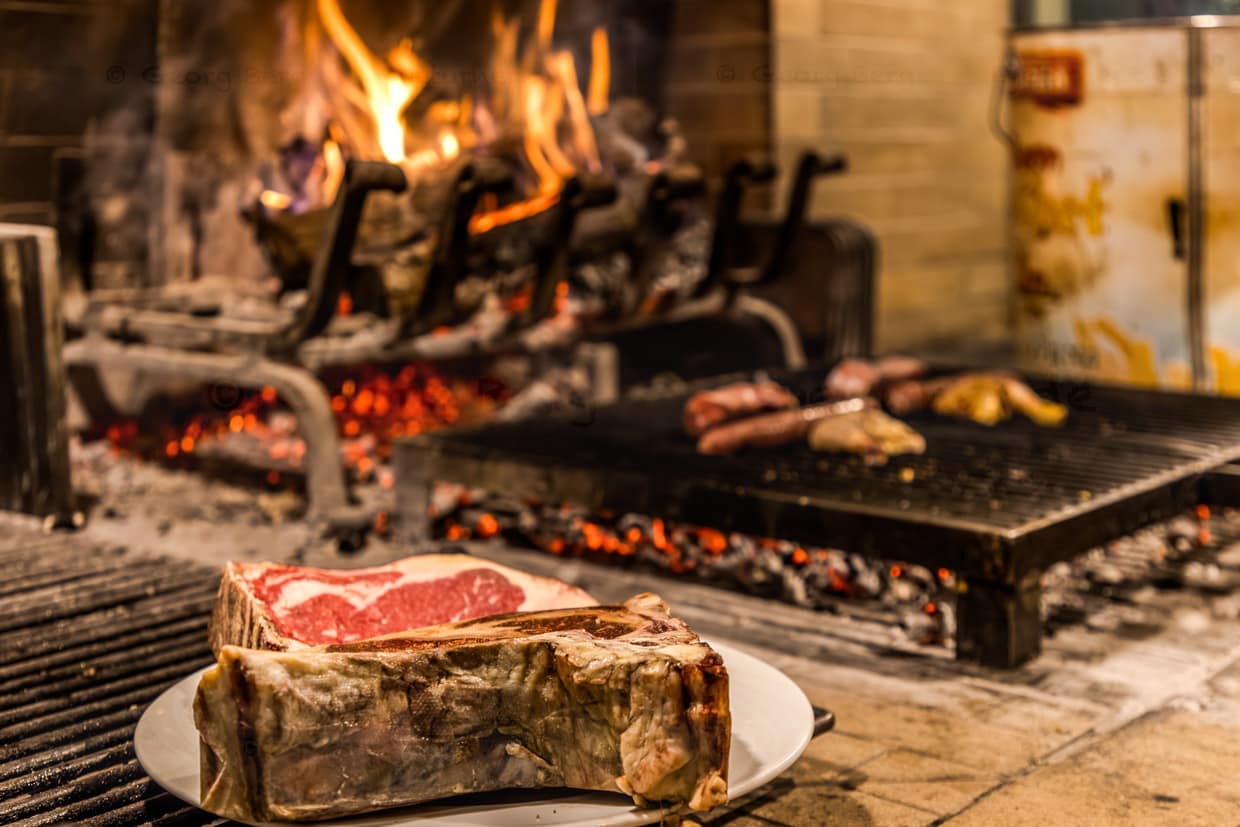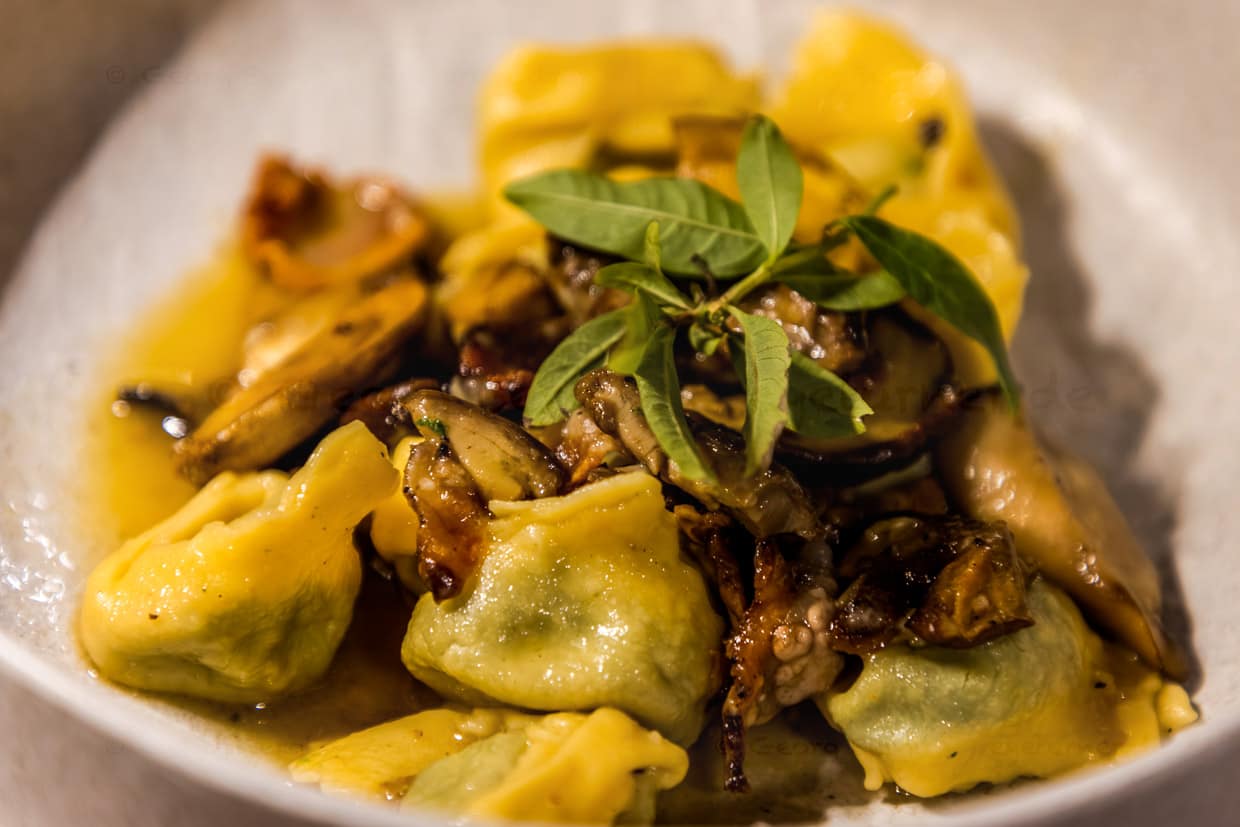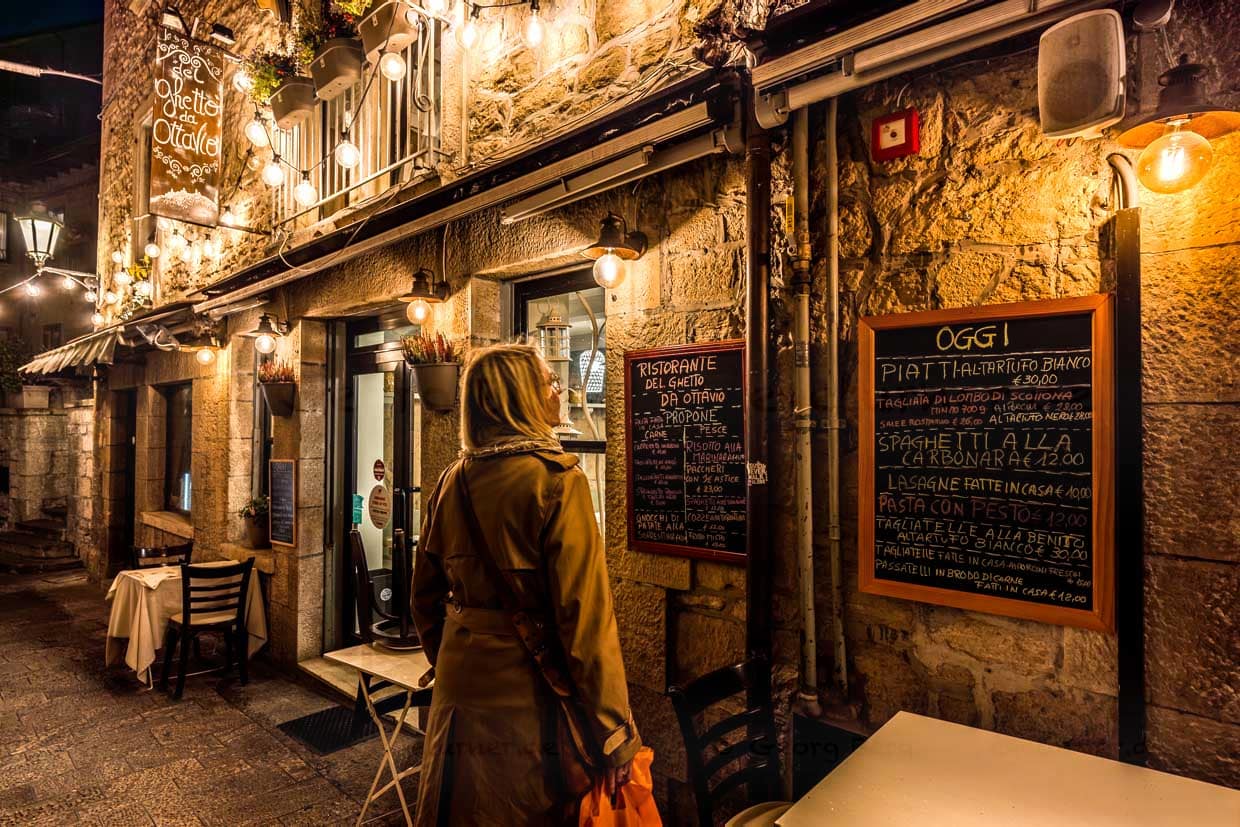The cuisine of San Marino is strongly influenced by Italian cuisine, particularly that of Emilia-Romagna and Marche, but has also produced its own specialties. The focus is on fresh, regional ingredients and a Mediterranean lifestyle. Agriculture provides high-quality fruit, vegetables, fresh herbs and fine olive oil. Many dishes are based on traditional recipes. The influences of neighboring regions can be seen in hearty dishes such as piadina and pasta e ceci. With no natural resources and an area of just 61 square kilometers, San Marino is the third smallest state in Europe after Monaco and the Vatican. For centuries, the community of the oldest republic in the world lived in poverty – this is reflected in the simple dishes.

The cake with the towers
The Torta Tre Monti celebrates the three towers of San Marino and is considered the country’s most popular souvenir. The cake consists of thin layers of wafers holding together a chocolate vanilla cream and dark chocolate fondant. The La Serenissima factory has been making Torta Tre Monti by hand according to a traditional recipe since 1942. 23 cast-iron waffle irons have been at work since the 1950s, baking crispy waffles for 300 cakes every day.

In addition to the classic version, La Serenissima also produces versions with coffee flavor or pistachio cream as well as a snack size. The cake in a bright blue box with the three iconic towers of San Marino can be found in small grocery stores in the old town and in the Consorzio Terra di San Marino.


No one can avoid piadina
The piadina is particularly noteworthy. The filled flatbreads are available in many bars. There are even special piaderias that offer countless filling variations. The thickness of the dough varies from region to region: in Rimini, near San Marino, the piadina is the thinnest, in Ravenna further north it is the thickest. Piadina originally comes from Romagna. Also known as piada, it typically consists of flour, lard or olive oil, salt and water. In the past, the dough was baked on a terracotta plate, but today it is usually baked in shallow pans or on electric griddles.

In San Marino, piadina is a must and is similar to the thin version from Rimini. The dish has a long history dating back to ancient Rome; the first mention of it dates back to 1317. Piadina used to be called the “bread of the poor”. In San Marino, the thin flatbread can be found in many bars and restaurants. The menus are often pages long. Popular fillings include cured ham, mortadella, Parmegiano, squacquerone, truffle or salami, often combined with rocket or tomatoes.

Piadina with panorama
If you want to eat piadina outside, you should treat yourself to a sumptuous version at Bar La Capanna. The bar is located directly below the three towers and the tables are crowded on a small rocky plateau. The best seats are on the edge of the plateau with a view into the abyss. It’s hard to know whether you’d rather look at the thin flatbread spilling out delicious squacquerone, a fresh cheese from Emilia Romagna, or at the Adriatic plain. In summer, La Capanna is hopelessly overcrowded, but it is well worth a visit in the off-season. In addition to the influences of Romagna and Marche, San Marino also offers its own culinary specialties.

Locals from San Marino
The Consorzio Terra di San Marino promotes and protects the Republic’s local products. The association of producers was founded during the coronavirus pandemic. Day visitors to San Marino can discover the most important products here at a glance – ideal as a souvenir. The range includes olive oil, hazelnuts, honey and pastries. The Republic of San Marino also has around 250 hectares of vineyards. The grape varieties cultivated include Sangiovese, Ribolla and Montepulciano. The largest wine producer is Cantina San Marino, a cooperative with 100 members who cultivate around 120 hectares.


Restaurants in the old town
San Marino offers a wide selection of good restaurants. Typical local dishes include pasta e ceci, a hearty pasta dish with chickpeas. The pasta simmers in an aromatic tomato sauce with chickpeas, garlic and rosemary and makes a simple, delicious dish. Another example of traditional cuisine is rabbit with fennel.


One of the specialties in San Marino is tagliatelle al ragù – homemade tagliatelle with a strong meat sauce – as well as strozzapreti, handmade pasta served in tomato sauce or with ragout and cappelletti in brodo, fresh pasta in a strong broth.


The dual leadership of San Marino is about the Capitani Regenti, one of the oldest democratic offices in the world. More recent attractions in San Marino include well-developed hiking trails. The Sentiero della Rupe circular trail leads past the three towers of the Republic and then turns into a cliff path that runs along the steep, rocky flank of Monte Titano. Whether you simply stroll through the narrow streets of the old town and enjoy the view again and again or take an extended hike, for example to Eduardo Kobra’s remote mural “The History of San Marino”: In the evening, restaurants such as Cesare, La Terrazza or Il Ghetto da Ottavio reward you with culinary specialties. A snack for in between is already set with piadina!
The research was supported by Visit San Marino


